Related Research Articles

The Georgian Soviet Socialist Republic was one of the republics of the Soviet Union from its second occupation in 1921 to its independence in 1991. Coterminous with the present-day republic of Georgia, it was based on the traditional territory of Georgia, which had existed as a series of independent states in the Caucasus prior to the first occupation of annexation in the course of the 19th century. The Georgian SSR was formed in 1921 and subsequently incorporated in the Soviet Union in 1922. Until 1936 it was a part of the Transcaucasian Socialist Federative Soviet Republic, which existed as a union republic within the USSR. From November 18, 1989, the Georgian SSR declared its sovereignty over Soviet laws. The republic was renamed the Republic of Georgia on November 14, 1990, and subsequently became independent before the dissolution of the Soviet Union on April 9, 1991, whereupon each former SSR became a sovereign state.

Alexander Mikhailovich Orlov, was a colonel in the Soviet secret police and NKVD Rezident in the Second Spanish Republic. In 1938, Orlov refused to return to the Soviet Union due to fears of execution, and instead fled with his family to the United States. He is mostly known for secretly transporting the entire Spanish gold reserves to the USSR and for his book, The Secret History of Stalin's Crimes.
The Case of the Trotskyist Anti-Soviet Military Organization, also known as the Military Case or the Tukhachevsky Case, was a 1937 secret trial of the high command of the Red Army, a part of the Great Purge.
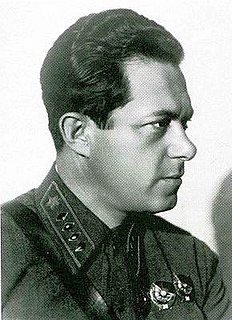
Iona Emmanuilovich Yakir was a Red Army commander and one of the world's major military reformers between World War I and World War II. He was an early and major military victim of the Great Purge, alongside Mikhail Tukhachevsky.

Vyacheslav Rudolfovich Menzhinsky was a Polish-Russian Bolshevik revolutionary, Soviet statesman and Party official who served as chairman of the OGPU from 1926 to 1934. He was master of more than 10 languages.

The Mingrelians are an indigenous Kartvelian-speaking ethnic subgroup of Georgians that mostly live in the Mingrelia region of Georgia. They also live in considerable numbers in Abkhazia and Tbilisi. In the pre-1930 Soviet census, the Mingrelians were afforded their own ethnic group category, alongside many other ethnic subgroups of Georgians.

Nikolai Nikolayevich Aseyev was a Russian and Soviet Futurist poet and writer.
Solomon Grigorevich Mogilevsky headed the Soviet foreign intelligence service, the INO of the GPU, from 1921 until May 1922. He was then sent to head the GPU in the South Caucasus region, where he was involved in the suppression of the 1924 August Uprising in the Georgian SSR. He died in a plane crash near Tiflis (Tbilisi) in unclear circumstances.

Patrick Donald Rayfield OBE is an English academic and Emeritus Professor of Russian and Georgian at Queen Mary University of London. He is an author of books about Russian and Georgian literature, and about Joseph Stalin and his secret police. He is also a series editor for books about Russian writers and intelligentsia. He has translated Georgian and Russian poets and prose writers.
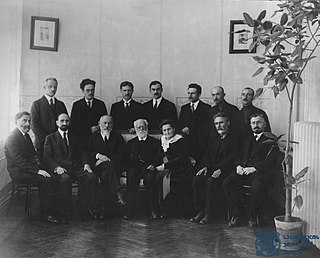
Seit Devdariani was a Georgian philosopher and political activist who was executed during Joseph Stalin's Great Purge.
Vasily Mikhailovich Blokhin was a Soviet and Russian major general who served as the chief executioner of the NKVD under the administrations of Genrikh Yagoda, Nikolay Yezhov, and Lavrentiy Beria.
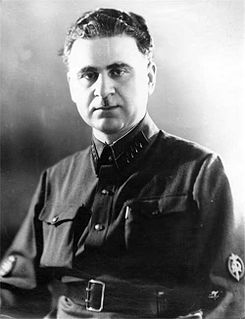
Sergo Arseni Goglidze was a Soviet security officer, NKVD official and Colonel General of State Security.
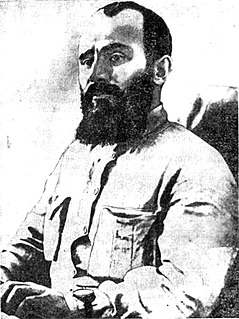
Georgiy Aleksandrovich Atarbekov was an Armenian Bolshevik and Soviet security police official.
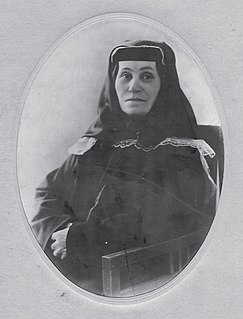
Ekaterine Giorgis asuli Geladze, commonly known as "Keke", was the mother of Joseph Stalin.

Besarion Ivanes dze Jughashvili, commonly known as Beso, was the father of Joseph Stalin. Born into a peasant family of serfs in Didi Lilo in Georgia, he moved to Tbilisi at a young age to be a shoemaker, working in a factory. He was invited to set up his own shop in Gori, where he met and married Ekaterine Geladze, with whom he had three sons; only the youngest, Ioseb, lived. Once known as a "clever and proud" man, Jughashvili's shop failed and he developed a serious drinking problem, wherefore he left his family and moved back to Tbilisi in 1884, working in a factory again. He had little contact with either his wife or son after that point, and little is known of his life from then on, except that he died in 1909 of cirrhosis.

Rosalia Samoilovna Zemlyachka, née Zalkind was a Russian revolutionary and Soviet politician. As a revolutionary, she was best known by the alias Zemlyachka, though she also used the party pseudonyms 'Demon' and 'Osipov', and her married name was Samoilova.

Ivan Panfilovich Belov was a Soviet military commander and Komandarm 1st rank.
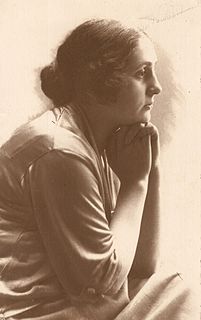
Sariya Akhmedovna Lakoba, was a Soviet woman who was the spouse of Nestor Lakoba, the leader of Abkhazia. She came from a wealthy Adjarian noble family. Her family was Muslim and very conservative and she wore a veil in her youth. Sariya and Nestor met in her parents' home when he was hiding from the British occupation forces. They fell in love and she ran away with him. A very calm and silent woman, she loved reading and collecting books. Sariya never finished school, but was self-educated and well read, and knew several languages. During their married life, she and Nestor often visited Moscow to attend official events. High-ranking members of the Party and the Government frequently visited their home in Abkhazia during vacations. She was friends with the second wife of Joseph Stalin, Nadezhda Alliluyeva, who once gave her a handgun as a present. Stalin also liked her.

The Evacuation of the Crimea was an event in the Russian Civil War, in which the Government of South Russia evacuated over sea from the Crimean Peninsula, the last stronghold of the White movement on the Southern Front, bringing an end to the fighting on that Front.
References
- Mark Kramer (2006). "Stalin and His Hangmen: The Tyrant and Those Who Killed for Him (review)". 8 (1) (Journal of Cold War Studies ed.).
{{cite journal}}: Cite journal requires|journal=(help)